#karl hartl
Text



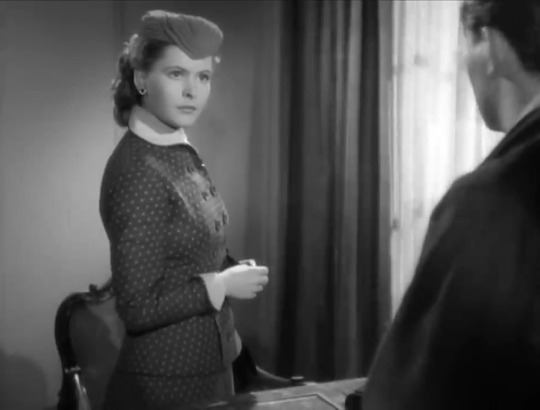
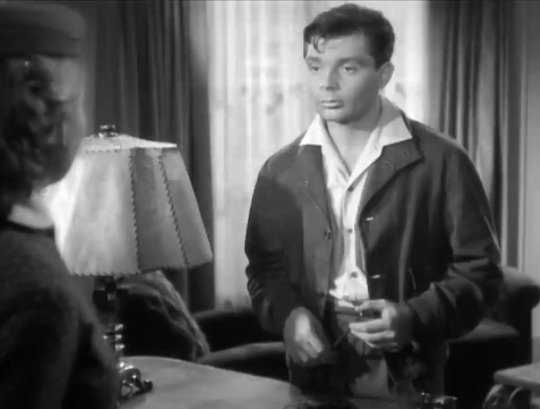







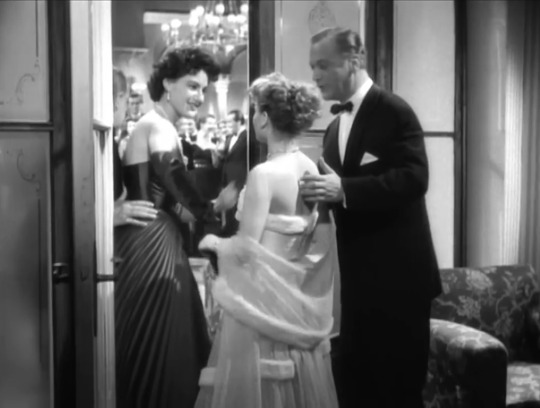

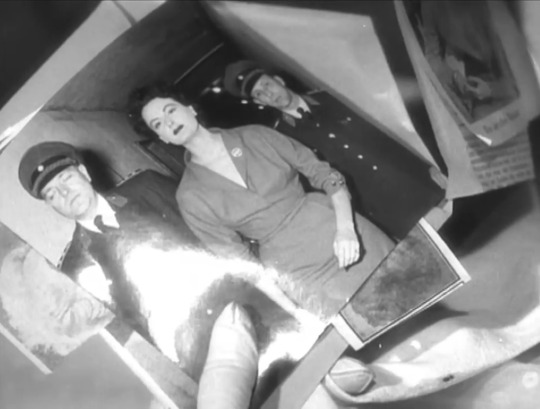

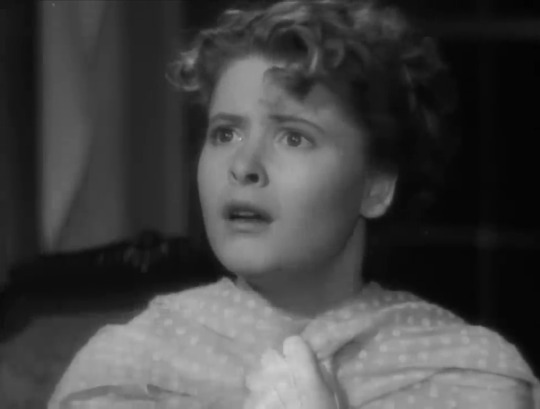
alles für pappa, karl hartl 1953
*
youtube
ohrfeigen, rolf thiele 1970
youtube
alphaville, jean-luc godard 1965
#alles für pappa#karl hartl#1953#curd jürgens#olga chekhova#johanna matz#käthe haack#peer schmidt#walter janssen#ohrfeigen#rolf thiele#1970#alphaville#jean-luc godard#1965#material#buw#ponyherz#elisabeth ii#dorian grey#jfk#lilian harvey#about photography#obst & gemüse oder der kunde ist könig
4 notes
·
View notes
Photo






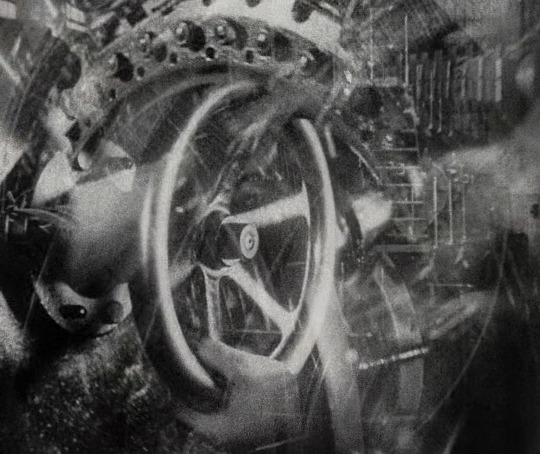

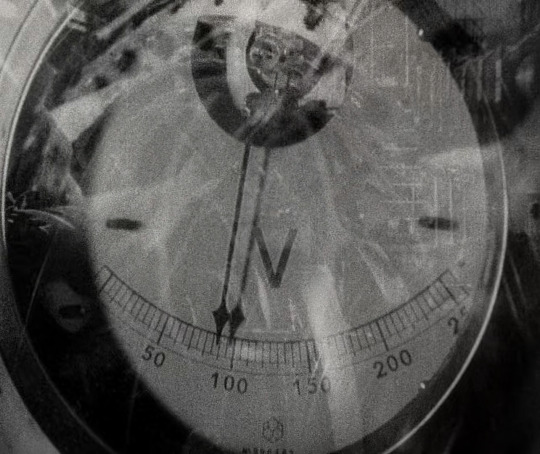
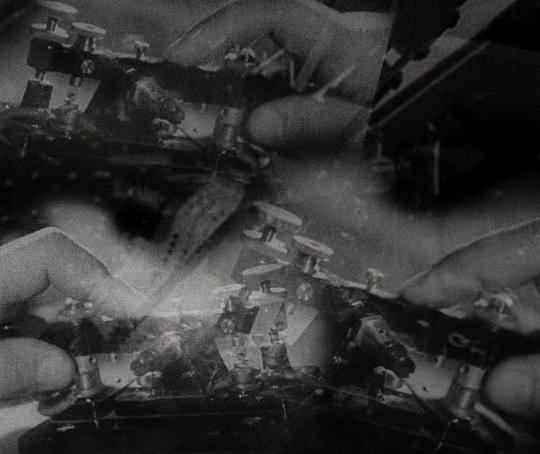
F.P.1 Doesn't Answer (Karl Hartl, 1932).
#f.p.1 doesn't answer (1932)#f.p.1 doesn't answer#karl hartl#f.p.1 antwortet nicht#günther rittau#willy zeyn#albert berthold henninger#erich kettelhut#konstantin irmen-tschet#theo nischwitz
18 notes
·
View notes
Text


Title card in the opening for "Der Mann, der Sherlock Holmes war" (1937, directed by Karl Hartl)
#if i recall correctly its a nazi propoganda film technically which sucks#this is the one where no one knew holmes was fictional until conan doyle himself made an appearance in court#apparently not even the people impersonating holmes knew it#hell of a watch#Universum-Film Aktiengesellschaft#ufa#der mann der sherlock holmes war#german film#vintage film#karl hartl#hans albers#heinz rühmann#babelsberg studios#black and white film#title card#sherlock holmes#holmes#german
2 notes
·
View notes
Text
Sci-Fi Saturday: Gold

Week 13:
Film(s): Gold (Dir. Karl Hartl, 1934, Germany)
Viewing Format: Blu-Ray: Kino Lorber
Date Watched: 2021-08-20
Rationale for Inclusion:
Most popular histories of German cinema gush over its silent era and Fritz Lang's early talkies, boils the Nazi era down to propaganda films, and then rapidly moves on to West Germany's New Cinema of the 1960s and 1970s. When touring the Berlin Film Museum in 2006, they had an exhibit acknowledging cinema made under the Nazi regime, but it was plain, matter of fact, and not at all celebratory of any figure or works. The standing international agreement to not give Nazis more credit for anything positive created under their supervision between 1933 and 1945 is one that this lifelong Indiana Jones fan, from a country that has historically been less willing to acknowledge its own history of genocide and white supremacy, cannot argue with.
However, when something is made deliberately withheld or rendered taboo, it risks developing a fetishistic or contrarian following. Curated, contextualized access is preferable to dispel mystique and render a work mundane. However, a work's problematic nature cannot be exercised completely, nor can the stain of its lineage be fully forgotten once known. This mental calculus of having interest in or love for a work despite it or its creator's controversial nature is something each person must work out for themselves.
All that to say, if you're grossed out by the inclusion of a film created under the Nazi regime, that's a completely fair perspective. However, surreptitious curiosity is also valid, and a normal human emotion.
And curiosity is definitely what motivated my inclusion of Gold (Dir. Karl Hartl, 1934, Germany). Partly it was wondering what a Nazi supervised science fiction film was like, period, especially relative to the Weimar Era films previously viewed. Partly it was a more basic curiosity: the prospect of hearing the voice of Brigette Helm, of Metropolis (Dir. Fritz Lang, 1927, Germany) fame. And to be perfectly honest, the simplistic wonder of hearing the voice of a performer whose art focuses on pantomime was the bigger draw.
Reactions:
Brigette Helm has a voice that is consistent with her appearance: elegant and German. The anticlimax of learning that fact is on par with realizing Harold Lloyd has a soft spoken, Midwest accent that matches his aesthetic, as opposed to the surprise of Charles Chaplin's English accent or Buster Keaton's deep baritone voice.
That question out of the way, what about the film itself? Nothing especially anti-semitic or fascist in visuals or content makes its production origin glaringly obvious. Given that like F.P.1 [AKA F.P. 1 Doesn't Answer] (F.P.1 antwortet nicht, Dir. Karl Hartl, 1932, Germany) an additional French language version was produced with export in mind, and the Nazis had just come to power and purchased UFA in 1933, and would not begin explicit international aggressions until 1938, it follows that they would not want to compromise cinematic commerce in 1934.
Instead, Gold is about the relationship between scientific progress and capitalist greed. A German scientist (Friedrich Kayßler) is about to succeed in the dreams of the alchemists and create a machine that can transform lead into gold, when sabotage destroys the machine and its creator with it. His engineer Werner Holk (Hans Alber) swears vengeance for his friend, and takes a job with industrialist John Wills (Michael Bohnen), who arranged the sabotage in order to corner the market on the technology. Holk proceeds to take down the usurper from the inside and the film ends with lots of satisfying explosions.
Amid the straightforward wrong scientist seeks revenge narrative are some incredible set pieces. Giant electrodes and machines with tunnel trains connecting the underground laboratory to the mainland. The sets and props were so impressive that footage of them was later reused in The Magnetic Monster (Dir. Curt Siodmak, 1953, USA). However, UFA did not make additional science fiction films during the Nazi era, so the sets and props were not reused in other movies by the studio.
Gold is interesting and ultimately competent but unremarkable, compared to the genre films that came before it.
And if you are interested in learning more about German cinema during the Nazi era, I recommend the documentaries Hitler's Hollywood (Dir. Rüdiger Suchsland, 2017, Germany) (which features Gold briefly) and Forbidden Films (Verbotene Filme, Dir. Felix Moeller, 2014, Germany).
3 notes
·
View notes
Text

Here's Peter Lorre as Bildreporter "Foto-Jonny" in F.P.1 antwortet nicht (1932), otherwise known as F.P.1 Doesn't Answer or F.P.1 Doesn't Respond.

This post will also prove why we need a Conrad Veidt & Peter Lorre Accidental Crime-Fighters Team -
Veidt & Lorre: Dynamisches Duo!

"Conrad Veidt and Peter Lorre en route to Oie Island." -Source
I love Veidt's hand on Lorre's shoulder. More inside scoop on the movie & the friendship behind the cut:
First: What's all this F.P.1 business? F.P. is a floating platform set in the middle of the Atlantic Ocean. There's a love triangle in this movie, too. Here's more from The Lost One: A Life of Peter Lorre:
"Based on Kurt Siodmak’s novel, it tells the story of a courageous flyer who prevents the destruction of a mid-Atlantic refueling point for transoceanic flights. Hans Albers would play the lead...but who would lighten what Reisch described as 'a heavy science fiction drama?'
"'Since the hero had a sidekick,' director Karl Hartl suggested, 'Why don’t we write the part of the little newspaper photographer so that Peter can play it?'
"And so they did, tailoring the role to better fit his talents.
"'Peter was very happy to get a part in which he could show his sense of humor, in which he could bring out laughs to get a different note from that monster, the child killer.'"
==
Shaved bald for his role in Der weisse Damon, Peter wore a wig!
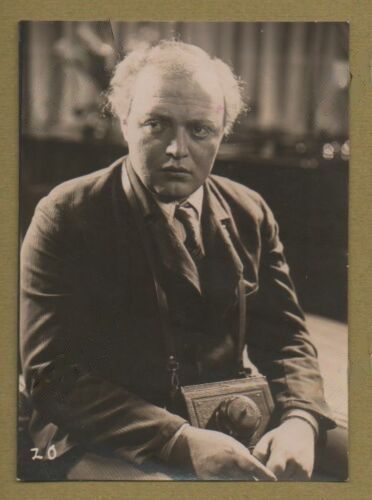
If you get this film, just make sure you're getting the version you want - Hartl had to direct German, French, and English-language versions at the same time, so three versions exist:
The German-language version is the one with Peter Lorre, and Hans Albers as the lead, Ellissen.
The French-language version has Charles Boyer playing Ellissen.
The English-language version has Conrad Veidt playing Ellissen.
Peter Lorre is neither in the French nor English versions, but:
"Hartl shot all three versions simultaneously on Greifswälder Oie, a small island in the Baltic, where a full-scale 'floating platform' was built. For three months, cast and crew, including pioneer German producer Erich Pommer, shared the only hotel on the nearby island of Rügen. There Lorre met Veidt, an actor who, like himself, was capable of switching on and off his demonic personality. Reisch recalled that Veidt 'always died with laughter at whatever Peter Lorre did.'" -The Lost One: A Life of Peter Lorre

Cast and crew travel to Oie Island by Söhren-Rügen to make English, French and German film versions of Kurt Siodmak’s F.P.1. antwortet nicht. Number 1 is Hans Albers. Number 2 is Conrad Veidt (who starred in the English version). Peter Lorre, in hat, is number 3, standing in front of Veidt. -Source

Here's Peter with Hans Albers.

"Intelligent and resourceful, Lorre’s Johnny is a devoted sidekick to Albers’s hero, who affectionately teases him with a string of descriptive nicknames, including Rollmöpschen (pickle with herring wrapped around it), Rollfilm, and alter Affe (old ape)." - The Lost One: A Life of Peter Lorre


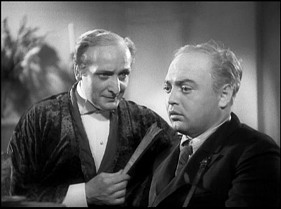
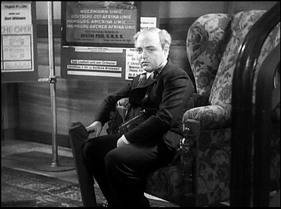
Back to behind the scenes, and the Veidt & Lorre proposal:
"After the sun set at five-thirty, everyone returned to the hotel for dinner, where one man 'provided more fun than anybody else in the whole star roster,' said Reisch. 'That was Peter. He could tell the most incredible stories with little nuances, hardly changing his face, just touching upon it and bringing the house down.'
"'It was inconceivable after working hours to have an evening without Peter. It would have been gloomy. He had an enormous sense of humor and was the happiest man on earth when people laughed.'
"After dinner, there was only one diversion—Ping-Pong. Much to everyone’s amusement, the six-foot-five Veidt and the five-foot-five Lorre paired up.
"'And these two guys, the one who played ‘Caligari’ and the other one who played the mass murderer in M became a team in Ping-Pong that was unbeatable,' said Reisch. 'It was not just if we win tonight, it was a matter of life and death to win the tournament. Not for the money, but there was a gala reception afterwards and a medal. And these guys played together like a team, with beautiful timing.'" - The Lost One: A Life of Peter Lorre
--
And this is why I'd read or watch a series of Veidt & Lorre, jokesters, pranksters, Ping-Pongsters, and, despite their best attempts to keep leading a life of joviality, ending up as accidental crime-fighters because they're just that good at divining human nature.
These next pics are of Conrad Veidt & Peter Lorre in All Through the Night - but taken out of context, they work!
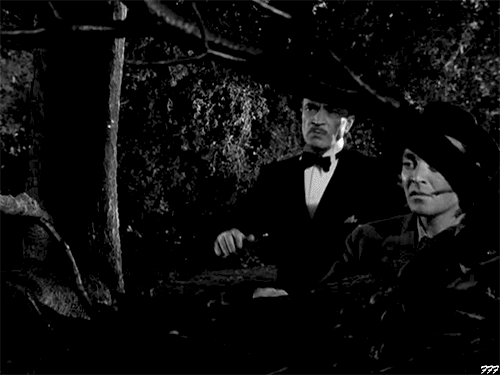

Conrad Veidt & Peter Lorre

And look at them all relaxed in this awesome behind-the-scenes pic on the set of All Through the Night (with Humphrey Bogart, Kaaren Verne, and director Vincent Sherman).

Here's another, albeit smaller behind the scenes image (I really thought I had a higher-res or a larger version). I love how they're facing each other and seem so comfortable with each other.
#Veidt & Lorre: Dynamisches Duo#need time travel machine now#peter lorre#peter lorre movies#F.P.1 antwortet nicht#1930s movies#conrad veidt#All Through the Night#1940s movies
44 notes
·
View notes
Text
With all the backlash against Snow White being a latina woman, let me tell you it's not impossible. I am Honduran and if you have ever read about Latin America beyond the American occupations in our countries we have had immigration from other continents, including Europe.
Many Germans migrated to Latin America before and after the World War II, and even though they have lost German as their first language, many aspects of their culture have impacted the Latin American countries in which they have settled.
And considering Snow White is of German descent, then there is no problem with a German-descended Latin American actress being Snow White, you all just are against the idea of giving the role to an actual white latina.
The German diaspora in Latin America began around the year 1530 when the King of Spain Charles V gave part of Venezuela to the families of German bankers, the Welsers, and likewise to the Fuggers in South America with the Klein-Venedig.
Carlos Hartling, the composer of the music for the Honduran Anthem was of German descent.
Deutsche
Bei all dem Widerstand dagegen, dass Schneewittchen eine Latina-Frau ist, möchte ich Ihnen sagen, dass es nicht unmöglich ist. Ich bin Honduraner, und wenn Sie jemals über Lateinamerika gelesen haben, das über die amerikanische Besatzung in unseren Ländern hinausgeht, gab es Einwanderung aus anderen Kontinenten, einschließlich Europa.
Viele Deutsche wanderten vor und nach dem Zweiten Weltkrieg nach Lateinamerika aus, und obwohl sie Deutsch als Muttersprache verloren haben, haben viele Aspekte ihrer Kultur die lateinamerikanischen Länder, in denen sie sich niedergelassen haben, beeinflusst.
Und wenn man bedenkt, dass Schneewittchen deutscher Abstammung ist, dann gibt es kein Problem damit, dass eine deutschstämmige lateinamerikanische Schauspielerin Schneewittchen ist. Sie alle sind einfach gegen die Idee, die Rolle einer echten weißen Latina zu geben.
Die deutsche Diaspora in Lateinamerika begann um das Jahr 1530, als der spanische König Karl V. einen Teil Venezuelas den Familien deutscher Bankiers, den Welsern, und ebenfalls den Fuggern in Südamerika schenkte mit der Klein-Venedig.
Carlos Hartling, der Komponist der Musik für die honduranische Hymne, war deutscher Abstammung
Es tut mir leid, wenn mein Deutsch nicht gut ist. Ich verwende den Google Übersetzer und wollte auf Deutsch schreiben, um meinen Standpunkt zu unterstreichen.
#snow white#white latina snow white#white latino women can portray snow white#white latina actress for snow white#latinas can play snow white#i can't believe the theme of latino not being a race is still this questioned#german language#german-descended latinos exist so there is no problem with one of them portraying snow white#latina snow white#carlos hartling
1 note
·
View note
Photo

1935 Japanese poster for METROPOLIS (Fritz Lang, Germany, 1927)
Correction: This poster is for GOLD (Karl Hartl, Germany, 1934)
Designer: unknown
Poster source: Thoxt
230 notes
·
View notes
Photo

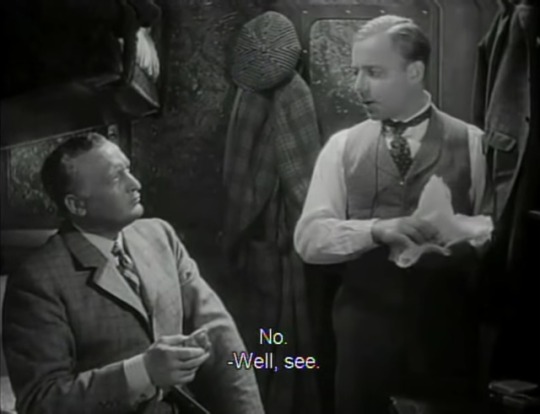
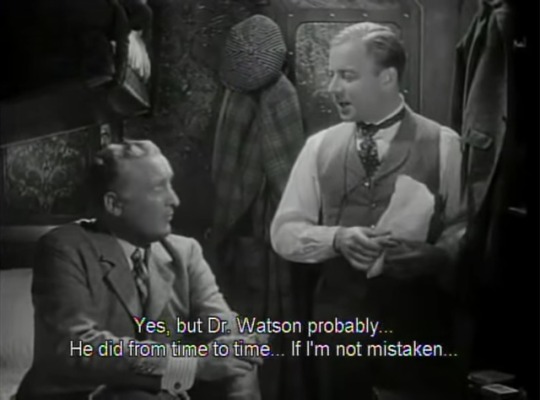
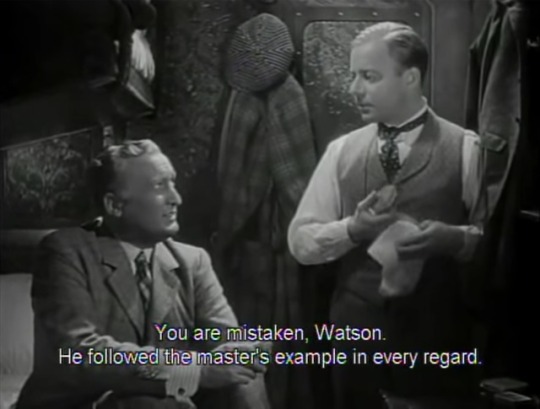
Der Mann, der Sherlock Holmes war (1937) — tr. The Man Who Was Sherlock Holmes
#Der Mann der Sherlock Holmes war (1937 film)#Karl Hartl#note this is at least partly a propaganda film#oh the irony#Hans Albers#Heinz Rühmann#The Man Who Was Sherlock Holmes (1937 film)#Two Merry Adventurers (1937 film)
26 notes
·
View notes
Photo
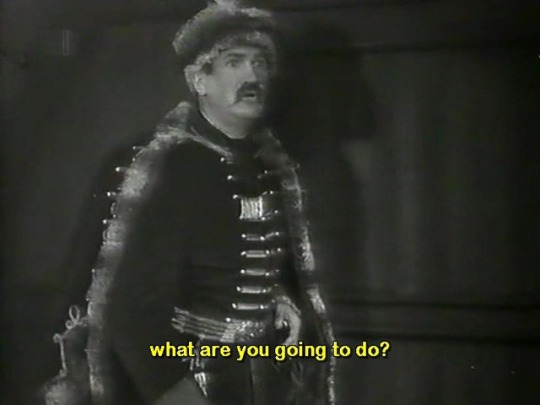





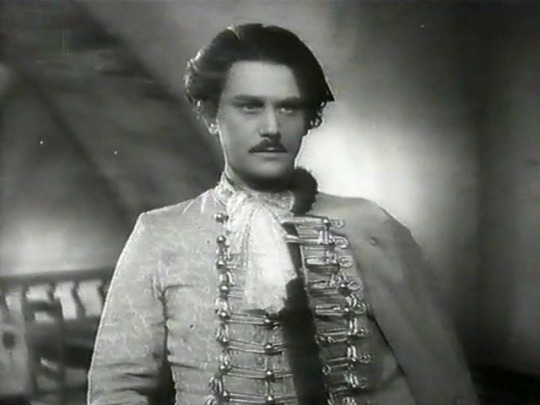
‘Zigeunerbaron’ (Karl Hartl, 1935).
8 notes
·
View notes
Text
"Explaining mythical monsters through projection—whether the projection of machinery or the projections of the mind—had not made them go away. On the contrary, monsters were still there, firmly situated within the technological and scientific projects of the Enlightenment, but they had changed. No longer roaming the streets at night, they now roamed minds and screens, moving into the realms of the in-between rather than taking sides in the dualism of fact and fiction. They were neither fully in your mind, nor fully outside of it: they were that which was both a hoax and an actual encounter, that which was neither imagination nor reality."
-Line Henriksen
"The fact that the reality of the exchange process mediates between the social producers, also implies that it installs a social reality of its own kind. The mediations (social practices related to each other as abstract labour) of capitalism are real, despite the fact that they are, fundamentally, abstractions, which in the first place also conceal the social relations of which they are a product. Marx famously writes: The ‘social relations between their private labour appear as what they really are,’ as an effective social reality. The reality of the commodity at the same time is delusive and appears as what it really is."
-Samir Gandesha / Johan F. Hartle
0 notes
Photo


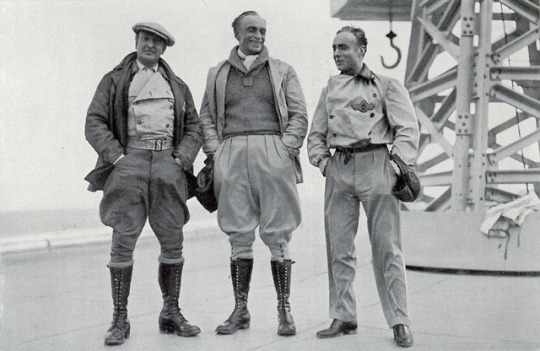
Tonight’s entertainment at Casa Old School Sci Fi is variously titled “F.P.1 antwortet nicht,” “F.P.1 Doesn't Respond,” “Secrets of F.P.1.,” “Floating Platform 1 Does Not Answer,” and “I.F.1 Ne Repond Plus”.
Austrian director Karl Hartl took sci fi author Curt Siodmak’s novel and produced three different versions of the movie: German, English, and French with different casts. This 1932 (German version)/1933 (English & French versions) science fiction film revolves around a permanent air station in the middle of the Atlantic Ocean.
The English version of this film is on YouTube: LINK
#F.P.1 antwortet nicht#F.P.1 Doesn't Respond#secrets of f.p.1.#Floating Platform 1 Does Not Answer#i.f.1 ne repond plus#weimar republic#curt siodmak#conrad veidt#hans albers#charles boyer#peter lorre#german cinema#german science fiction
56 notes
·
View notes
Text
Areida Hawke

Race: Human
Gender: Female
Class: Rogue
Title: Champion of Kirkwall
Family: - Aristide Amell (maternal grandfather)
- Bethann Walker (maternal grandmother)
- Malcolm Hawke (father)
- Leandra Amell (mother)
- Bethany Hawke (sister)
- Carver Hawke (brother)
- Gamlen Amell (maternal uncle)
- Mara Hartling (aunt)
- Charade Amell (maternal cousin)
- Fausten Amell (maternal great-uncle)
- Damion Amell (maternal first cousin once removed)
- Revka Amell (maternal first cousin once removed)
- Four unnamed second cousins through Revka
- Anders (husband)
- Karl Hawke (son)
- Malcom Hawke II (son)
- Leandra Hawke (daughter)
Voice: Jo Wyatt
Appearances: - Dragon Age II
- Dragon Age Legends
- Dragon Age: Inquisition
- Heroes of Dragon Age
Areida Hawke (born 9:06 Dragon), commonly known as The Champion of Kirkwall, is the main protagonist of Dragon Age II. She is the daughter and eldest child of Malcom Hawke and Leandra Amell, and the older sister of Bethany and Carver Hawke.
Background
Areida was born in 9:06 Dragon to Malcom Hawke, an apostate, and Leandra Amell, a noblewoman from Kirkwall who ran away to elope with Malcom after discovering she was pregnant with Areida, an action that caused her maternal grandparents to disown her mother. At the age of five, Areida was given two younger siblings. A brother named Carver and a sister named Bethany. Areida loved her younger siblings and was very protective of them, even while they were still in her mother’s womb. After her siblings were born, wanting to protect her beloved family, Areida began to practice dual dagger combat fighting.
When Areida was fourteen-years-old, her family settled on the outskirts of Lothering after being on the run from Templars for several years. Due to her sister, Bethany, being a mage, her father spent a lot more time with her sister than he did with either her or Carver, a fact that Areida didn’t mind at all, understanding that Bethany needed to be trained in using her magic properly.
When Areida was twenty-one, her father became ill and passed away, leaving her as the head of the Hawke household. Three years later, Areida and her brother, Carver, enlisted in King Cailan’s army and took part in the battle of Ostagar. When Loghain Mac Tir betrayed Cailan and left the battlefield with his army, therefore leaving the King and the rest of the army to die, Areida and Carver managed to survive and escape back to Lothering in order to retrieve their mother and sister.
Involvement
Dragon Age II
Around the year 9:30 Dragon, the Fifth Blight has just begun and, following their victory at Ostagar, the darkspawn fell upon the village of Lothering. The Hawke family was among the last to escape alive. Hawke's mother Leandra suggests that they flee to Kirkwall, where her younger brother Gamlen holds the Amell estate. On the road they stumble into Aveline and her templar husband, Wesley, also survivors of the massacre. During their escape, they run into further bands of darkspawn. Though the party defeats many of these creatures, victory comes at a cruel price: Aveline's husband contracts the darkspawn taint and Areida’s brother, Carver, is slain by an ogre. Surrounded by darkspawn and on the verge of death, they are rescued by an attacking high dragon. The dragon turns out to be Flemeth, the Witch of the Wilds. Flemeth offers them safe passage to Gwaren in exchange for a favor. Areida had no choice but to agree.
Areida, her mother Leandra, sister Bethany, and Aveline board a ship to Kirkwall but find that the city is filled with an influx of Ferelden immigrants, all fleeing the Blight. The city guard has been turning the refugees away and banning them from the city. Worse, they discover that Gamlen has gambled away the Amell estate and fortune. Gamlen is able to get a contact to bribe the Hawke family and Aveline into the city, but only if Areida and Bethany agree to work off a tremendous debt as indentured servants. Areida had no choice but to agree to be under the smuggler, Athenril’s employment.
One year later, Areida has managed to work off the debt but still lacks the funds needed to properly care for the entire family. Areida then meets a dwarf named Varric, who persuades her to become a business partner in his and his brother, Bartrand's Deep Roads Expedition. Needing a map of the Deep Roads for the Expedition, Areida, Varric, Bethany, Aveline head locate an apostate and grey warden named Anders in Darktown. While trying to make enough money to invest in the expedition, Areida meets and befriends Merrill, A Dalish elven mage who is First to her clan's Keeper, Isabela, A free-spirited pirate captain and smuggler, shipwrecked and stranded in Kirkwall, and Fenris, an escaped elven slave from the Tevinter Imperium, infused with lyrium tattoos by his former master.
In time, Areida was able to make enough to invest in the expedition. Though Bartrand betrayed both Areida, Varric, Anders, and Fenris during the expedition, the treasures found within the Deep Roads brings Areida both fame and fortune. When she returns home however, she finds Templars taking Bethany away to the circle, having discovered her magical abilities. Areida tries to stop them but Bethany tells her to stand down and goes with the Templars quietly. Areida comforts her heartbroken mother as they witness Bethany being taken away.
Two years later, Areida, Varric, Anders, and Bethany enter a secret Warden prison in the Vimmark Mountains searching for a sect of the Carta who are after "the blood of the Hawke". After investigating the deranged Carta members, the group discovers that the Carta sought to bring either Areida or Bethany's blood to a creature called Corypheus in order to wake him from slumber. After getting to the bowels of the prison Areida chooses to side with the grey warden, Larius who believes Corypheus should be destroyed over the grey warden, Janeka who wants to control Corypheus. Once she releases Corypheus from his prison by using her blood, Areida and her friends destroy him. The Seekers of Truth attempt to investigate some time later, but the prison has been destroyed and they are turned away by Grey Wardens.
A year later, Areida's status in Kirkwall has improved substantially since she assumed her role as scion of the aggrandized Amell family. She has also developed feelings for Anders and started a romantic relationship with him. Areida is asked by the templar Emeric to investigate the mystery of the missing women in Kirkwall. While investigating the murders, Areida's mother, Leandra, is abducted by the white-lily serial killer while on her way to visit Gamlen. Following the killer's trail, Areida finds that Leandra has been murdered and pieced together with parts of other women. Her killer and the instigator of all the serial killings is a blood mage named Quentin. Keeping Leandra alive with his magic, Quentin aspires to recreate the image of his dead wife. Areida battles Quentin and his demon and undead forces. After Quentin dies, Leandra also dies. Her last words were telling Areida how proud she is of her. Areida mourns the loss of her mother while being comforted by friends.
Tensions between the Qunari (who have been stranded in Kirkwall for several years and refuses to leave without their missing relic) and the city's denizens have also been escalating. Areida is asked by Viscount Dumar to intervene with Qunari affairs several times during their stay in Kirkwall but the discord reaches a boiling point when Aveline, now captain of the guard, enlists Areida's aid in trying to arrest some criminal elves who have been granted religious sanctuary in the Qunari Compound. The Arishok, who had to endure a series of provocations from Kirkwall's anti-Qunari sect, takes a final offense to the attempted arrest of his new converts and counterattacks; marshaling his forces to conquer the city and convert it to the Qun. Areida was able to rally the templars and Circle mages and fight back the Qunari. They reach the Viscount's Keep where Areida defeats the Arishok in single combat. Having saved the city, Areida is crowned the new Champion of Kirkwall.
Two years afterwards, Areida joins a mysterious elf assassin named Tallis, in infiltrating the Chateau Haine and stealing a precious relic. Areida, Tallis, Anders, and Fenris take part in a traditional Orlesian Wyvern hunt. After which they fail an attempt at stealing the relic and are captured. Tallis then reveals the truth about the relic, The Heart of the Many. After escaping, Areida chooses to help Tallis pursue the relic which leads to a fight with Tal-Vashoth and Grand Duke Prosper de Montfort which ends in Prosper de Montfort's death. Though his death at Areida's hands would have normally warranted retribution from Orlais, Prosper's dealings with the Tal-Vashoth against the Qunari, if revealed, would have embroiled Orlais in an impolitic scandal. Areida then lets Tallis leave with the true prize. At some point after returning to the Hawke Estate, Areida writes a journal passage regarding her relationship with Tallis and whether they'll meet again.
Another year later. Knight-Commander Meredith has taken stewardship of the city at the request of the Chantry, but so far has prevented the election of a new viscount. Meredith's stance against the mages has become harsher and much more cruel. After several more mages escape the Circle, Meredith orders more raids, crackdowns, and unwarranted incarcerations. Meanwhile, tales of insurrection from the Mage Underground have been becoming more frequent but have steadily declined to the point of almost utter annihilation due to Meredith's harsh tactics. First Enchanter Orsino accuses Meredith of being a tyrant and urges the citizens of Kirkwall to revolt against her. The citizens of Kirkwall look to Areida to keep the peace between the Templars and the Circle. Meanwhile, Areida is also requested to protect the city from maleficarum apostates. After Bethany is kidnapped by insurgents, Areida becomes embroiled in a conflict with rebel mage-templar conspirators seeking to overthrow Meredith.
Things reach a boiling point when Anders blows up the Kirkwall Chantry in order to remove the chance of peaceful compromise. Meredith immediately orders the Rite of Annulment and demands that the Champion stand with her and her templars in executing every mage in the city. First Enchanter Orsino pleads with the Champion to defend them against the templars, citing that the Circle had nothing to do with the attack on the Chantry. Knowing that the mages had nothing to do with the Chantry explosion, Areida chose to support First Enchanter Orsino and the other mages.
The final battle ends in the Gallows. Desperate to defeat the knight commander's forces, Orsino uses Blood Magic to become a harvester. Meredith, driven insane and paranoid by her Red Lyrium forged sword, also becomes an enemy. Both are eventually defeated by Areida to restore the peace. After the battle, Areida and her friends escape Kirkwall before templar reinforcements arrive. Areida's name became a rallying cry for oppressed mages everywhere.
On the Run
Fearing that Divine Justinia V was planning an Exalted March on Kirkwall, Areida and her companions left Kirkwall to spare its denizens and also to divide the Divine's forces should she send them to hunt for them. Areida went on the run with Anders, living under the name Marian and cutting her hair a little bit to avoid being recognized. A month after they left Kirkwall, Areida discovered that she was pregnant with her’s and Anders child, the baby having been conceived a week before Anders blew up the Chantry. Several months later, she gave birth to son named Karl, named after Anders’ friend and former lover who was mercy killed by Anders after being made tranquil. Two years afterwards, she became pregnant again and gave birth to another son named Malcom, named after her father.
Dragon Age: Inquisition

Eventually Areida contacted Stroud to help with the investigation into Red Lyrium. Stroud however was concerned about corruption in the Grey Warden ranks and went into hiding. Areida was later contacted by Varric Tethras who introduced her to Inquisitor Rosabelle Trevelyan. After answering the Rosabelle's questions about Corypheus and how he may be related to missing Grey Wardens, Areida and Rosabelle rendezvous with Stroud in a smuggler's cave in Crestwood to see what his investigation uncovered.
Stroud explains that he was investigating if Corypheus could have survived fatal wounds just like an Archdemon can. Yet in the middle of his investigation, every Grey Warden in Orlais began to hear the Calling which he believes is being elicited by Corypheus. Believing that their end is near, Warden-Commander Clarel planned on using a blood magic ritual that would end all Blights before they all perished. Stroud was branded a traitor for protesting Clarel's plan and went into hiding. Stroud, Areida, and Rosabelle scout the ancient Tevinter ritual tower in the Western Approach to investigate a Grey Warden congregation.
At the tower, the party witnesses Grey Warden mages sacrificing their fellow Wardens to summon demons. They are being led by Lord Livius Erimond, a Venatori Magister who convinced Clarel to use his blood magic techniques to raise a demon army to invade the Deep Roads and kill the Old Gods before they wake. The demon binding rituals Erimond taught the Grey Warden mages, however, has the side effect of enslaving them to Corypheus, who will use them to conquer Thedas. Erimond escapes to Adamant Fortress while the party confronts the enslaved Wardens of the tower.
Areida and Stroud join the Inquisition as they lay siege to Adamant Fortress. They confront Erimond and Clarel about the truth of the demon binding ritual and attempt to sway the Wardens against Erimond. When Erimond summons Corypheus' dragon to deal with the Inquisition, Clarel has a change of heart and betrays Erimond. The dragon attacks and a massive battle ensues after which, the Inquisition pursues Clarel. Clarel inflicts her wrath on Erimond but is killed by the dragon he has summoned. Clarel's last act is casting a spell that subdues the dragon, but its crash causes the ground beneath them to crumble, resulting in the party falling off the ramparts. Rosabelle uses her mark to open a rift to transport the party to the Fade.
The party finds a spirit posing as Divine Justinia V who briefs them that they are in the realm of a Nightmare demon and that Rosabelle must recover the memories it took from her. As Rosabelle recovers these memories, she remembers how the mortal Divine was bound by Grey Wardens and sacrificed to power an orb -- an orb which Rosabelle picked up and which gave her the mark, and how the spirit in the Divine's form was the one who led Rosabelle out of the Fade after the creation of the Breach. Once Areida realizes that the Grey Wardens had a hand in sacrificing the Divine to further Corypheus' schemes, Areida becomes incensed and accuses the Grey Wardens of being out of control and needing to be checked. Stroud is defensive about the accusation, and argues that the Wardens were most likely mind controlled by Corypheus and that Areida herself has caused much chaos by causing the mage rebellion which Areida retorts that she did so to protect innocent mages.
The spirit leads the party to a rift but the Nightmare is preventing their escape. The spirit sacrifices itself to weaken the Nightmare, and the party defeats the Aspect of the Nightmare blocking their escape. The party reaches the rift but either Areida or Stroud must stay behind to distract the Nightmare for the party to leave. Areida wants to sacrifice herself to atone for freeing Corypheus but Stroud takes the sacrifice instead to atone for all the harm the Grey Wardens have done. After the party escapes from the fade, Areida travels to Weisshaupt to brief the Grey Wardens on what has transpired.
Trespasser
In 9:44 Dragon, Varric mentions that Weisshaupt has apparently deteriorated into 'the special kind of mess that only happens when Areida shows up'. A year before the Exalted Council, Areida became pregnant again and gave birth to a daughter she and Anders named Leandra, named after her mother. The epilogue states that some time later, Areida, Anders, and their children returned to Kirkwall and that Areida is helping Varric rebuild Kirkwall's damaged infrastructure.
#dragon age#dragon age 2#Dragon Age: Inquisition#Areida Hawke#Hawke#female hawke#fhawke#champion of kirkwall#Hawke Family#Hawke siblings#Hawke sisters#Amell Family
3 notes
·
View notes
Photo
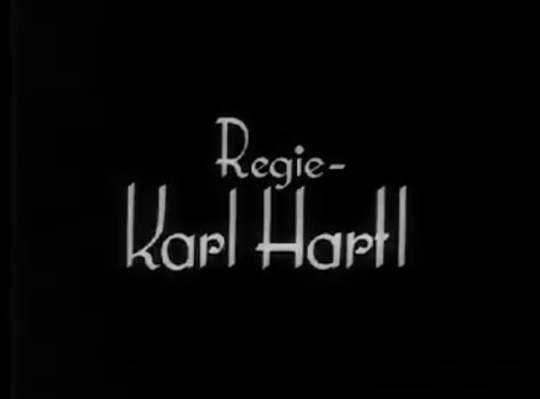
f.p.1 antwortet nicht (1932)
0 notes
Text
Sci-Fi Saturday: F.P.1
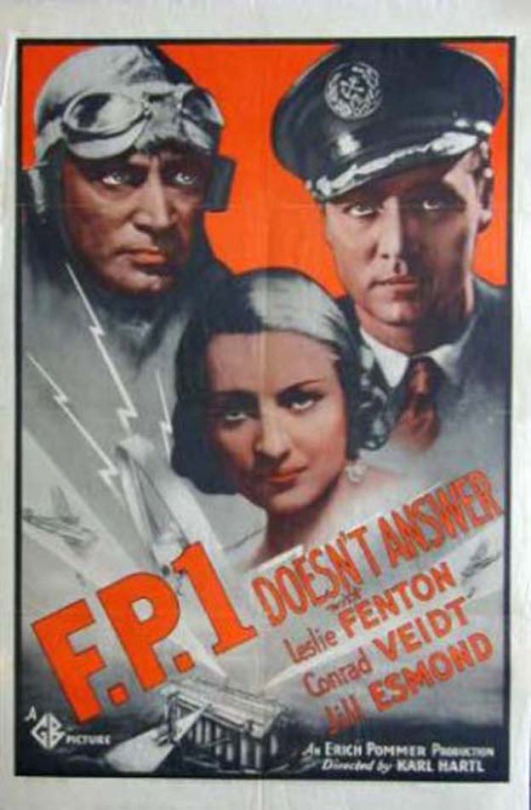
Week 10:
Film(s): F.P.1 [AKA F.P. 1 Doesn't Answer] (F.P.1 antwortet nicht, Dir. Karl Hartl, 1932, Germany)
Viewing Format: English language version, DVD
Date Watched: July 16, 2021
Rationale for Inclusion:
Like Just Imagine (Dir. David Butler, 1930, USA), and a lot of films to follow on this survey, I discovered F.P.1 [AKA F.P. 1 Doesn't Answer] (F.P.1 antwortet nicht, Dir. Karl Hartl, 1932, Germany) by browsing a Wikipedia list of science fiction films. Aside from it being an example of a sci-fi film with aviators as protagonists, and featuring an experimental aquatic base, what drew my attention was that it was made as a multiple-language version (MLV) film.
Prior to dubbing and subtitling becoming the standard ways of distributing films to foreign language markets, studios would concurrently produce multiple versions of a film, using the same sets, props, etc, but have the spoken language be different in each one. Sometimes they would keep the same actors and/or director across versions, like with The Blue Angel (Der blaue Engel, Dir. Josef von Sternberg, 1930, Germany). Other times it was a completely different set of actors and directors, like Dracula (Dir. Todd Browning, 1931, USA) and Drácula (Dir. George Melford, 1931, USA). With F.P.1, director Karl Hartl shot all three versions, each with a different cast, in German, French and English.
Which version did we watch? In early 2021 the only version I could track down was a Grapevine Video DVD release that included the German and English versions, but no subtitles. Had we paused our exercise, or been okay with going out of chronological order for a few weeks, we could have obtained Kino's August 2021 Blu-Ray release, which also features the German and English version, but includes English subtitles with the German version. Since we did not wait for that to become available, we went with the English version in the Grapevine Video transfer.
Reactions:
After doing multiple movies in a row where science fiction was intertwined with horror, it was nice to have a change of genre. With its aircraft carrier of the future at the center of the narrative, we got a military story and the first example in our survey of aviators as protagonists, or the "aeronautic sci-fi" subgenre as I like to identify the grouping.
F.P.1 also represents what my partner refers to as "gas era" sci-fi. This era covers works where some kind of special gas serves as a superweapon or bleeding edge technology. Given the use of mustard gas in the first World War, it's not surprising that aerosolized chemicals became a trope in science fiction prior to the Atomic Age, when nuclear technology became the new default for advanced tech. Anyone who has ever watched the 1966s Batman television series knows that aerosol weapons never completely vanished from the genre post-Atomic Age, they just appeared less often.
As for the film itself, it was okay. I liked what I saw enough to pick up the Kino Blu-Ray release. I was hoping to do a re-watch and comparison of the German and English language versions for this post, but could not find the time to do so. I will do a follow up post in the future comparing those versions. I wish I could compare the French version too, especially since it stars Charles Boyer, but it seems inaccessible on contemporary video formats at present.
1 note
·
View note
Photo
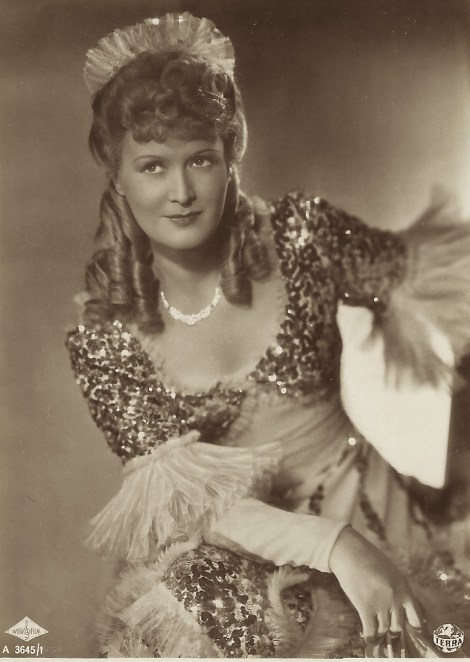
MARTE HARRELL: PRETTY AUSTRIAN ACTRESS OF THEATER, FILM, AND TELEVISION | THE CABINET CARD GALLERY Marte Harell (1907-1996) was an Austrian film actress. She was married to Karl Hartl (1899-1978), an Austrian film director. Harell’s filmography... Source: MARTE HARRELL: PRETTY AUSTRIAN ACTRESS OF THEATER, FILM, AND TELEVISION | THE CABINET CARD GALLERY
0 notes
